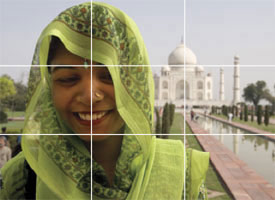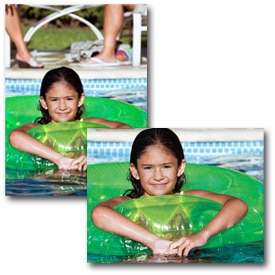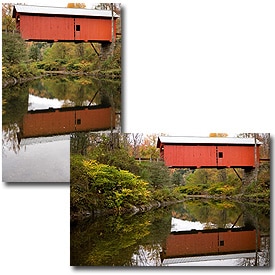Position your subject |
 Photographing the woman slightly off-center creates a more interesting photo. | The perfect way to make photos more interesting is to use the rule of thirds:
|
Get closer to your subject |
 Getting closer allows you to capture the details and expressions of your subject. | The simplest technique for getting better photos: Get closer to your subject.
|
Crop your photo |
 Cropping the legs from this photo instantly transforms it from a snapshot to a frameable portrait. | You won’t always get that perfect shot to begin with. Keeping the rule of thirds in mind, try cropping your photo after you’ve shot it, either in your camera or with photo-editing software.
|
Choose better photo backgrounds |
 An intricate background works well for subjects with simple or no patterns. | Be sure the background of your photo doesn’t interfere with your subject and take attention away from the focal points.
|
Pick the proper orientation |
 While both images showcase the reflection, the horizontal one also captures the river’s beautiful surroundings. | Your camera produces a rectangular image. This gives you two distinct orientations to work with—vertical or horizontal.
|
Use point of view |
 Instead of a traditional, head-on portrait, try an over-the-shoulder shot. | Break from the habit of shooting everything from eye level.
|
Frame your subject |
 An archway serves as a great natural frame for the subject—the building. | Framing is what draws the viewer’s eye to the main subject. Creative ways to frame your subject are everywhere!
|
Experiment with abstract photography |
 A close-up of beach pebbles is pleasantly punctuated by a seed pod’s shot of color. | A fun way to learn more about basic photo composition is to zoom in on abstract details. The purpose is to make a work of art rather than show the object in a realistic way.
|
No comments:
Post a Comment